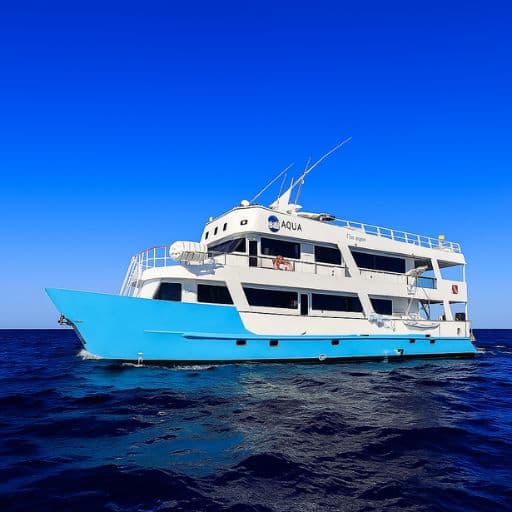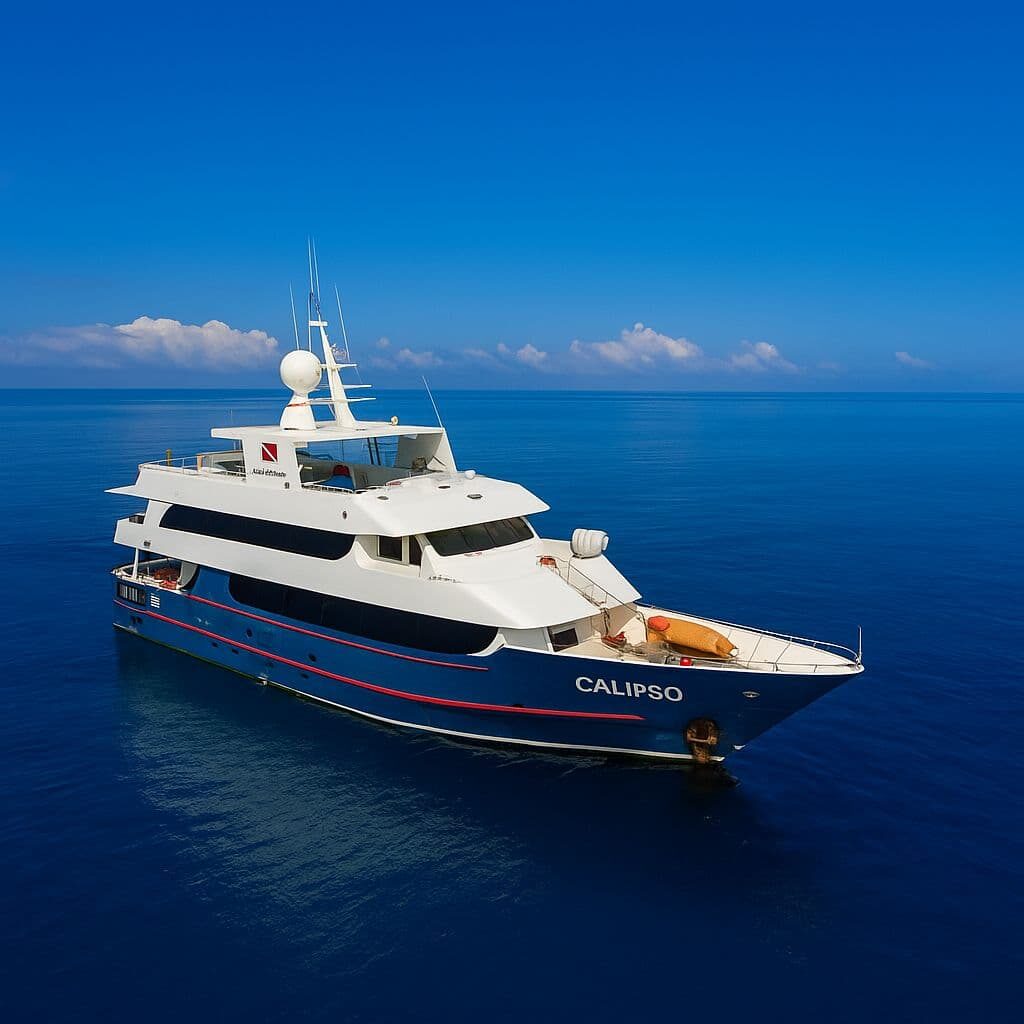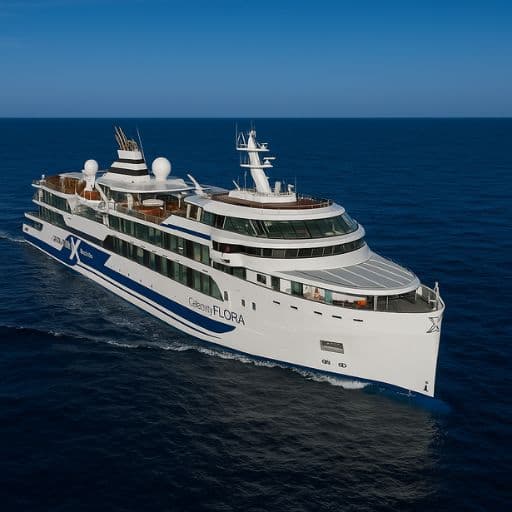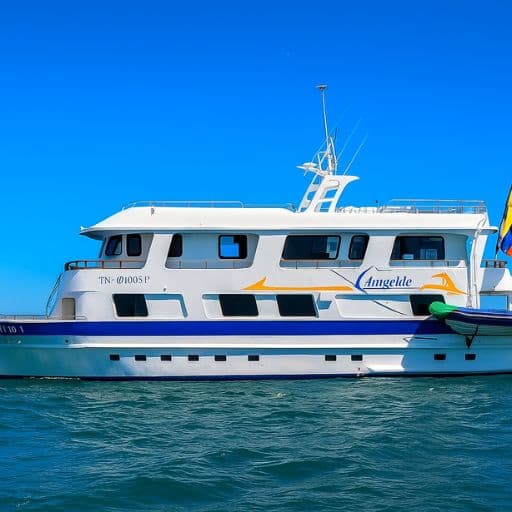The cruise industry stands at the precipice of a massive digital transformation that smart investors cannot afford to ignore. Based on forecasts for US-derived revenue of the three biggest cruise lines (Carnival, Royal Caribbean, and Norwegian), Oliver Wyman estimates up to $3.3 billion of annual cruise passenger ticket booking value could shift to online channels by 2028. This isn’t just another incremental change in consumer behavior—it represents a fundamental restructuring of how cruise lines operate, compete, and generate returns for shareholders.
As a finance and investing educator who has analyzed countless industry transformations, I can tell you that we’re witnessing something extraordinary unfold on the high seas. The cruise industry, traditionally viewed as a capital-intensive, low-tech sector focused primarily on ship capacity and destination access, is rapidly evolving into a technology-driven experience economy. This shift is creating unprecedented opportunities for investors who understand which cruise lines are positioning themselves as digital leaders versus those clinging to analog business models.
The Premium Valuation Effect of Technology Leadership

The market is already rewarding cruise lines that demonstrate genuine technology leadership with premium valuations, and the gap is widening rapidly. Royal Caribbean employs AI for dynamic pricing, with their pricing algorithm adjusting fares in real-time by analyzing seasonal trends, competitor pricing, and booking windows, while their Royal IQ app uses AI to curate personalized recommendations for guests, considering preferences and booking history to suggest tailored activities. These aren’t just operational improvements—they’re revenue multiplication engines that directly impact the bottom line.
Consider the financial implications: 70% of cruisers said they would select a future booking channel because it has generative AI capabilities, yet most cruise lines are still playing catch-up in this space. The early movers are capturing disproportionate market share while simultaneously reducing their distribution costs. When Royal Caribbean’s AI-powered systems can optimize pricing in real-time and increase onboard spending through personalized recommendations, they’re not just improving customer satisfaction—they’re fundamentally altering their unit economics in ways that compound over time.
The technology adoption curve in cruising mirrors what we’ve seen in other industries: early adopters gain sustainable competitive advantages that become increasingly difficult for laggards to overcome. Studies indicate that businesses adopting AI for process automation can experience up to a 40% increase in productivity, and in an industry where operational efficiency directly translates to profit margins, these gains represent massive shareholder value creation.
- The Galapagos Laboratory: Where Innovation Meets Conservation
Perhaps nowhere is this technology transformation more pronounced—or more profitable—than in the Galapagos cruise market, where environmental protection requirements have created the perfect laboratory for next-generation cruise technology. This UNESCO World Heritage site, with its strict environmental regulations and limited vessel permits, has become the testing ground for innovations that will eventually reshape the entire industry.
Celebrity Flora was built with the latest environmental technologies, featuring a dynamic positioning system that allows the mega-yacht to remain on station without dropping anchors, protecting the seabed, and solar panels that supplement electricity, reducing emissions. But here’s what makes this particularly compelling from an investment perspective: Conservation yacht (20 guests) is expected to launch in late 2025 and is a highly anticipated hybrid-electric ship, an exciting development for this conservation-focused destination.
The Galapagos market represents the future of cruise investing because it demonstrates how environmental regulations, rather than constraining profitability, can actually drive premium pricing and technology adoption that creates sustainable competitive moats. Vessels operating in these protected waters command pricing premiums of 40-60% over traditional cruise itineraries, while simultaneously pioneering technologies that will become industry standards as environmental regulations tighten globally.
This isn’t just about being environmentally responsible—it’s about recognizing that the intersection of regulatory compliance, technological innovation, and premium positioning creates investment opportunities that deliver both strong returns and positive ESG outcomes. As we’ll explore throughout this analysis, the cruise lines that are winning in the Galapagos today are developing the playbook for dominating the industry tomorrow. Check out various Galapagos cruise options, to see how these island are on top of the industry.
h2 IoT and Smart Ship Infrastructure: The Connected Vessel

The Internet of Things (IoT) revolution in cruise ships represents one of the most tangible and measurable technology investments in the maritime industry today. Unlike abstract AI algorithms or complex software systems, IoT infrastructure creates immediate, visible improvements in both passenger experience and operational efficiency that directly translate to enhanced revenue and reduced costs. For investors analyzing cruise line technology spending, IoT investments offer some of the clearest paths to quantifiable returns.
RFID Wearables and Seamless Payment Systems
The implementation of RFID wearable technology has fundamentally transformed the onboard spending dynamics that drive cruise line profitability. Princess Cruises’ Ocean Medallions, Royal Caribbean’s WOW Bands, and Viking Cruise’s intelligent TraceSafe devices represent more than convenient accessories—they’re sophisticated revenue optimization tools that eliminate friction from every purchasing decision.
Consider the financial mechanics: traditional cruise transactions require passengers to retrieve room keys or credit cards, creating multiple decision points where purchases can be abandoned. RFID wearables reduce transaction time by 60-80% while simultaneously increasing the likelihood of impulse purchases. When a passenger can simply tap their wrist to buy a cocktail, purchase shore excursion photos, or upgrade their dining experience, the psychological barriers to spending dissolve.
The data reveals the impact: cruise lines report 15-25% increases in onboard spending per passenger after implementing comprehensive RFID systems. On a typical seven-day cruise with 3,000 passengers averaging $1,200 in onboard spending, a 20% increase translates to an additional $720,000 in revenue per sailing. With 50+ sailings annually per ship, we’re looking at $36 million in incremental revenue that flows directly to the bottom line.
Smart Cabin Automation and Energy Management

Smart cabin technology delivers a dual benefit that sophisticated investors should appreciate: enhanced guest satisfaction paired with significant operational cost savings. Modern cruise cabins equipped with IoT sensors can automatically adjust lighting, temperature, and entertainment systems based on occupancy patterns and guest preferences, while simultaneously optimizing energy consumption when rooms are unoccupied.
The energy savings alone justify the investment. Smart cabin systems typically reduce individual room energy consumption by 20-30% through automated climate control, LED lighting optimization, and standby power management. On a 3,000-passenger ship, this translates to annual fuel savings of approximately $2-3 million at current energy costs. When multiplied across a fleet of 25+ ships, these savings reach $50-75 million annually—enough to fund the entire IoT infrastructure investment within 2-3 years.
Contactless Boarding and Biometric Security Systems
The shift toward contactless boarding represents both a passenger convenience upgrade and a significant operational efficiency gain. Biometric systems that combine facial recognition with passport scanning can process passengers 3-4 times faster than traditional check-in procedures, reducing embarkation time from 4-6 hours to 2-3 hours for large vessels.
The operational cost savings are substantial: faster boarding reduces port time requirements, potentially saving $50,000-100,000 per day in port fees for large ships. More importantly, the improved passenger experience creates measurable value through higher satisfaction scores, reduced complaints, and increased likelihood of repeat bookings and positive reviews.
Real-Time Monitoring of Ship Systems and Environmental Conditions
Modern cruise ships operate as floating cities with complex mechanical, electrical, and environmental systems that require constant monitoring and optimization. IoT sensor networks provide real-time data on everything from engine performance and fuel consumption to air quality and water treatment systems, enabling predictive maintenance strategies that dramatically reduce operational costs.
The financial impact of predictive maintenance cannot be overstated. Unplanned maintenance events on cruise ships typically cost $500,000-2 million per incident, including emergency port calls, passenger compensation, and repair costs. IoT-enabled predictive maintenance systems reduce unplanned downtime by 30-50%, translating to potential savings of $10-20 million annually for a major cruise line operating 20+ ships.
Waste Management Optimization

Smart waste management systems use IoT sensors to monitor waste levels, optimize collection routes, and track recycling compliance—particularly crucial for ships operating in environmentally sensitive areas like the Galapagos. These systems reduce waste management costs by 15-25% while ensuring regulatory compliance that protects valuable operating permits.
In regulated environments, the compliance value is even more significant than the cost savings. A single environmental violation in the Galapagos could result in permit suspension worth tens of millions in lost revenue. IoT monitoring systems provide the documentation and real-time alerts necessary to maintain perfect compliance records.
Energy Consumption Analytics
Comprehensive energy monitoring through IoT networks enables cruise lines to optimize fuel consumption across all ship systems. Advanced analytics can identify inefficiencies in real-time and automatically adjust operations to minimize fuel usage while maintaining passenger comfort and safety standards.
Fuel represents 15-20% of total cruise operating costs, making even modest efficiency improvements extremely valuable. A 5% reduction in fuel consumption for a large cruise ship saves approximately $3-5 million annually in fuel costs alone. IoT-enabled optimization systems typically achieve 8-12% fuel savings, delivering $5-8 million in annual value per ship.
ROI Calculations: Infrastructure Costs vs. Operational Savings and Revenue Enhancement
The financial case for IoT infrastructure investment becomes compelling when examining the comprehensive impact across revenue enhancement and cost reduction. A typical IoT implementation for a large cruise ship requires $5-8 million in initial infrastructure investment, including sensors, networking equipment, software platforms, and integration costs.
Revenue Enhancement:
- RFID payment systems: +$36 million annually (20% onboard spending increase)
- Improved passenger satisfaction: +$5-10 million (higher repeat rates, premium pricing)
- Faster boarding/operational efficiency: +$2-5 million (reduced port costs, capacity optimization)
Cost Reduction:
- Predictive maintenance: -$10-20 million (reduced unplanned downtime)
- Energy optimization: -$5-8 million (fuel and power savings)
- Waste management efficiency: -$1-2 million (optimized operations)
Total Annual Impact: $59-81 million per ship
Payback Period: 2-4 months
10-Year NPV (8% discount rate): $350-500 million per ship
These calculations demonstrate why IoT investments represent some of the highest-return technology spending in the cruise industry. For investors evaluating cruise line technology strategies, companies with comprehensive IoT implementations should command premium valuations based on their demonstrably superior operational efficiency and revenue generation capabilities.
The key insight for investors is that IoT infrastructure creates compound value: initial efficiency gains fund additional technology investments, which drive further improvements in a virtuous cycle that becomes increasingly difficult for competitors to replicate. Cruise lines that have fully embraced IoT connectivity are building sustainable competitive advantages that will define industry leaders for the next decade.
